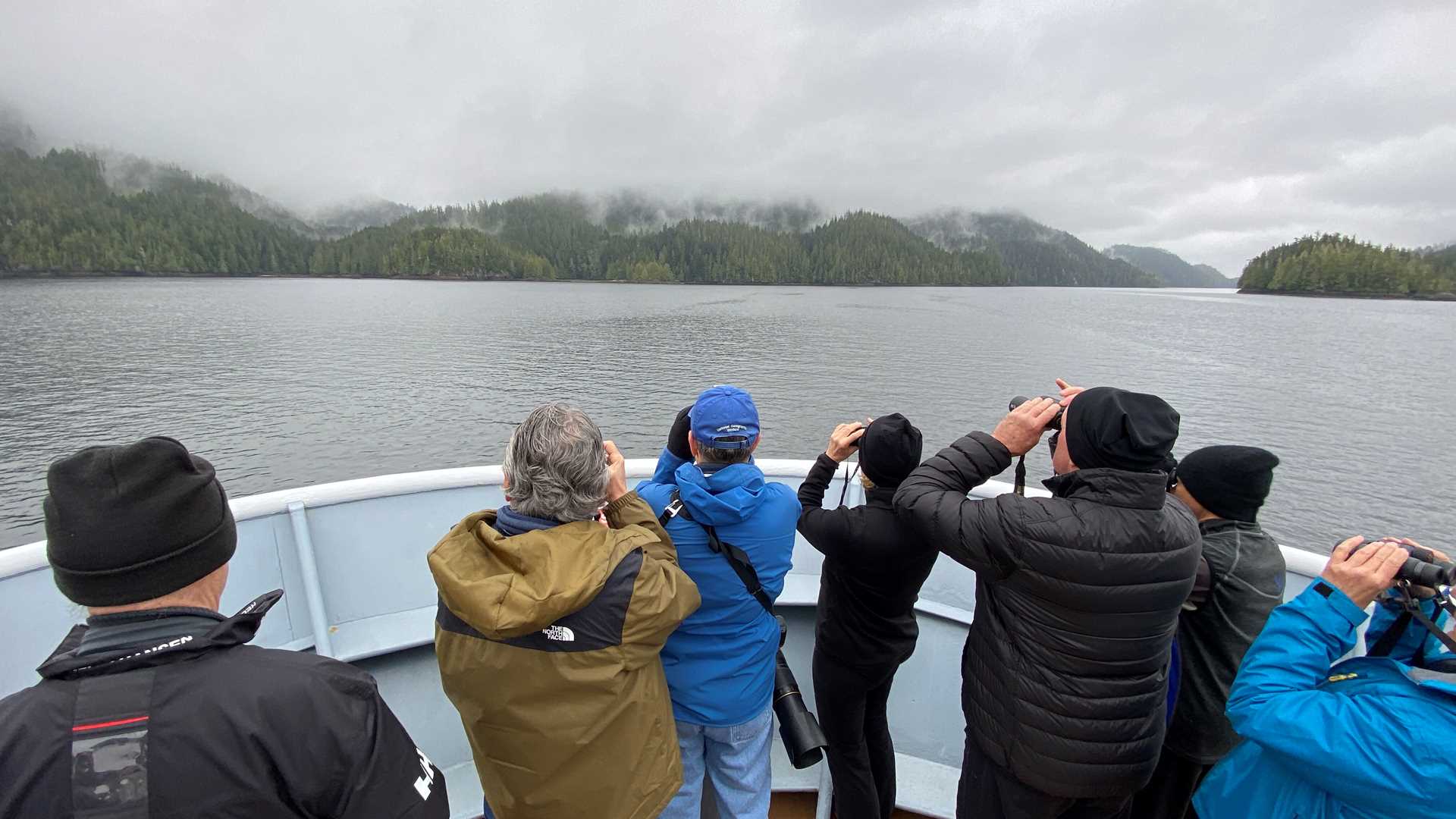Today was, simply put, an unbelievable day aboard National Geographic Sea Bird. The day began earlier than initially intended when a pod of several dozen Pacific white-sided dolphins flanked the ship and rode both our bow and wake at around 0645. Bored of the vessel, they moved toward shore, and passengers went down to breakfast. As staff began to coordinate the day during their morning meeting, Captain Paul St. Germain uttered one simple word on the radio: “Bingo.” All of us knew what this meant, and we turned our attention to the starboard bow where three killer whales swam against the verdant reflection of the evergreens. Eventually, the orcas, too, grew tired of us, but they were replaced by a lone sea otter and a raft of western grebes. The morning’s wildlife highlights concluded with glimpses of a black bear foraging along the shoreline in the shadow of bald eagles on the wing.
Following lunch, we explored Alert Bay, a community of but a few hundred Kwakwaka’wakw people with an undying sense of kinship and reverence for tradition. After a walk along the boardwalk in view of the plumose anemones and a constellation of sea stars, we arrived at the Umista Cultural Center. My favorite exhibit at the center is populated by the artifacts returned to the First Nation following the end of the potlatch ban. The stories are poignant and powerful, and they were a great primer for the afternoon dance performance. Locals young and old gathered to show us their traditional garb and movement, welcoming us into their midst with open arms.
As we walked back to the ship, we were within earshot of a massive celebration at the Big House of Alert Bay. Indigenous groups from around Washington and British Columbia had gathered to celebrate the closure of fish farms throughout their homeland. The farms had been cultivating Atlantic salmon far from their home, which was negatively impacting the Pacific populations upon which these people relied. Their roars and beating drums echoed far beyond the closed doors of the house and into the street. Their joy was contagious; though we could not see them, their celebration provided smiles that lasted well into the evening. No force of evil nor ban of culture could disrupt such a fever.







